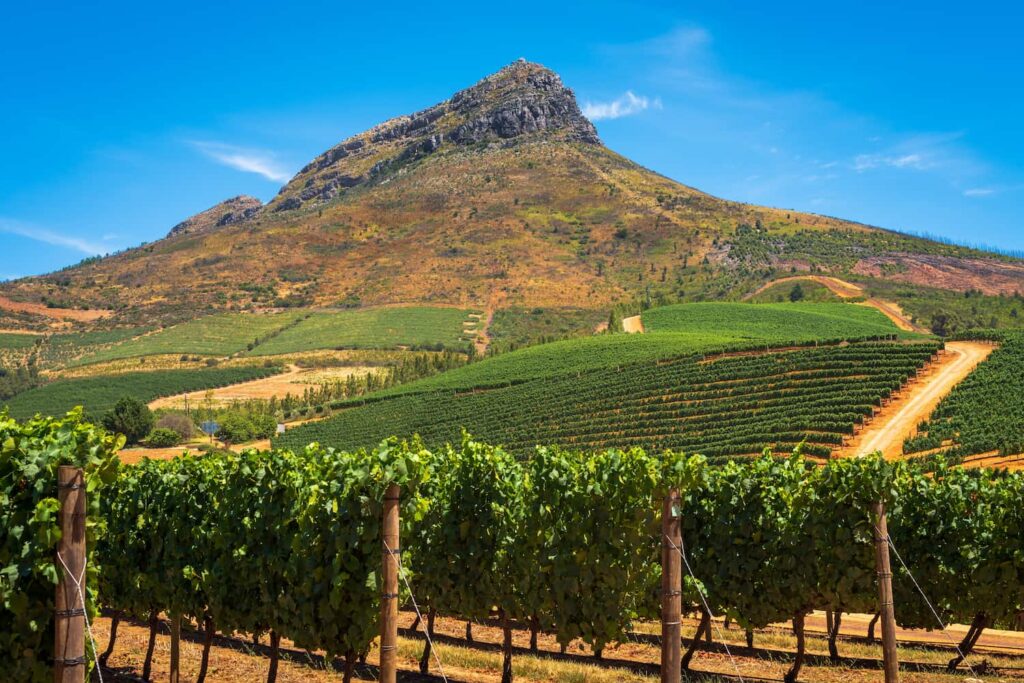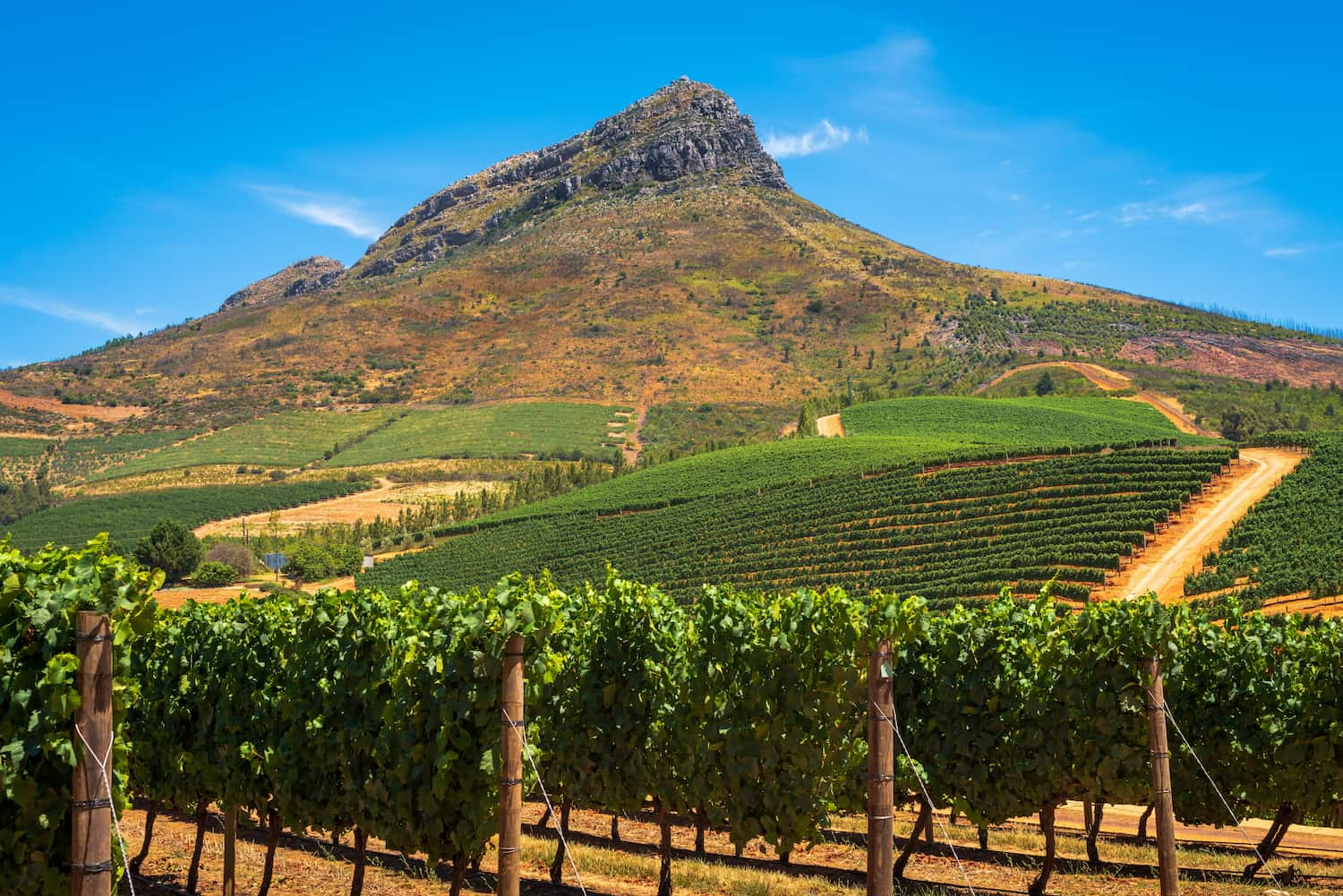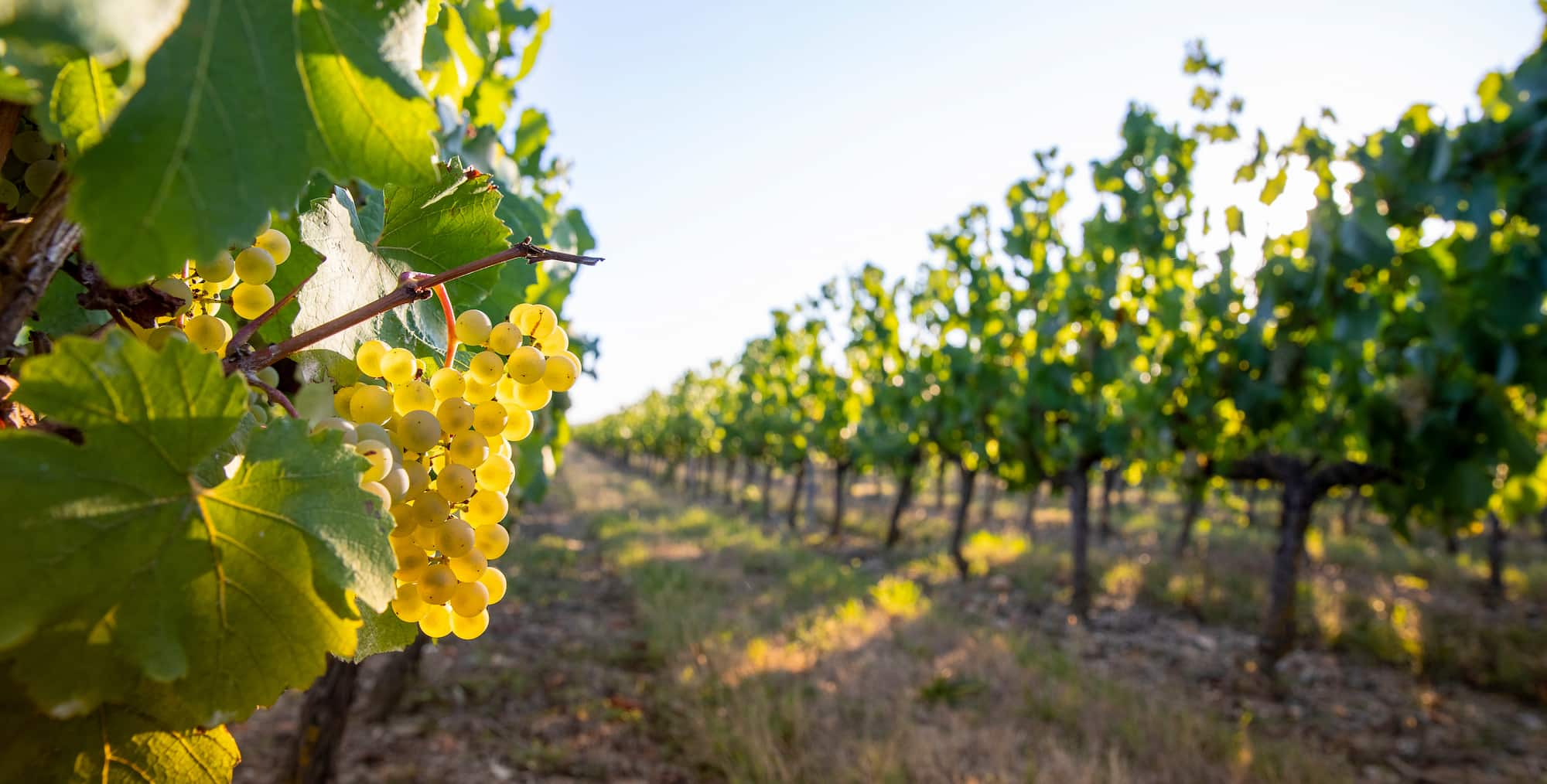
A guide to buying Chenin Blanc | What should you consider when choosing a white wine?

The wonderful white grape of the middle Loire has been sorely underrated. Historically, winegrowers in California and South Africa exploited the grape to produce generous volumes of bulk wine, and so Chenin’s reputation was tarnished. Yet it is now taken very seriously in the New World, particularly in the Western Cape. At its best, Chenin Blanc is full-bodied, structured, and produces elegant whites of real finesse. Its potential to win the hearts and minds of consumers is finally being realised.
This guide will explore the different flavours of Chenin Blanc when planted across the world, and when the white wine is appropriate to drink.
Click on a link to jump to that section:
What kind of wine is Chenin Blanc?
Over the centuries, this white variety was exported to regions in the New World, including California, South Africa and Australia. Bulk wine companies appreciated Chenin’s ability to deliver generous yields, however, there are many high-quality examples available as well. Indeed, the grape is increasingly used to make nervy, complex and age-worthy wines of all stages of sweetness, sometimes matured in barrique to add depth and structure.
Young and ripe Chenin Blanc has a most distinctive bouquet: quince, pear, citrus and honeydew. With bottle age, a cornucopia of tertiary flavours can emerge, most memorably honeysuckle, cheese rind and caramel. But even warm-climate wines will typically offer good acidity; this is one of Chenin Blanc’s major strengths. In the Loire Valley and South Africa, the grape is normally produced as a single-varietal style. There is no tradition of blending Chenin Blanc in Vouvray and Saumur, at least when producing still wines. Yet both still and sparkling Anjou, for example, can incorporate up to 20% Chardonnay and Sauvignon Blanc.
Chenin Blanc by region
France
Chenin Blanc is fundamental to the winemaking culture of the middle Loire. Fifty years ago, the sweet wines of Vouvray, Coteaux du Layon and Quarts de Chaume were venerated by consumers – an intoxicating mix of richness and acidity that could live for decades. But times have changed, and so have fashions. Today’s superstars are the dry Chenin Blanc wines, produced from old vines that thrive on the region’s metamorphic and calcareous soils.
One of the most famous appellations is Savennières in Anjou. Vineyards planted on south-facing banks yield small berries of immensely concentrated fruit, rich in substance and powerful in structure. Its celebrated ‘Grand Cru’ is La Coulée de Serrant: seven hectares of biodynamic vineyards exclusively owned by the Joly family.
However, the sparkling wines of the Loire Valley are no less commercially important. Primarily based on Chenin Blanc, sparkling Saumur is a real bargain: fruit-forward and delightfully fresh bubbly. The local terroir, a crumbly limestone known as ‘tuffeau’, is ideally suited to the production of high-acid fizz.
South Africa
Chenin Blanc was brought to South Africa by the Dutch East India Company in the 17th century. This was a masterstroke: it thrives on the Western Cape’s ancient soils, which include granite, Table Mountain Sandstone, and shale. It is the most planted (white) variety in South Africa today, used to make a broad palate of styles that range from light and steely to powerfully structured.

Few critics would deny that old bush vine Chenin is the nation’s greatest white; wines of real finesse and substance at a fair price. Stellenbosch and Swartland produce the finest examples, where coastal influences – and altitude – help maintain Chenin’s vibrant natural acidity. The local synonym for Chenin Blanc is “steen”.
Argentina
Although the country’s reputation rests largely on Malbec, Argentina exports greater volumes of premium white wines – including Chenin Blanc. Harnessing a blend of diverse terroirs and extreme landscapes, producers are fashioning opulent Chenin Blancs in the higher-altitude sites of Mendoza. The wines are typically ripe and fruit-forward, however, there is enough freshness to balance out the concentration. Chenin is also commonly used in sparkling wine production in Argentina.
The USA
In the 20th century, Chenin Blanc was widely planted in California and used to make fruity wines. But when handled with care, it can reach great heights in the cooler parts of the Golden State. The top wines of Sonoma County deserve high praise: honeyed beauties with all manner of tropical fruits and flowers on the mid-palate. The total acreage has declined in recent years, while quality has soared. With a natural acidity produced, Chenin Blanc can be adapted to blend with Chardonnay.
Chenin Blanc viticulture & winemaking
Chenin Blanc is a versatile grape, used to make not only still dry wines, and delicious sparkling, but also noble rot (and late harvest) sweet wines. The variety buds early and yet ripen late, so there is a real risk of frost attacks in cooler climates. Like its close relative, Sauvignon Blanc, Chenin will produce a mammoth crop if it is cultivated on fertile soils, bathed in sunshine. Vigilance is a winegrower’s secret weapon: Chenin vines require judicious pruning, to curtail the plant’s natural vigour. It is also susceptible to fungal diseases and rot at harvest time if the weather turns nasty.
The grape maintains good acidity levels at full ripeness, unless the crop is hugely inflated. It also reflects the nuances of terroir with razor-sharp precision, yielding very precise, high-toned wines on the skeletal soils of the Loire, and a more exotic, rounded expression on Cape granite. One of the most remarkable things about Chenin is its longevity. These wines are often made from botrytised grapes, traditionally fermented in ancient wooden casks in the Loire, and bottled after 14 months or so.

Some of the most expensive dry Chenins are vinified in French oak. The wines are then typically aged on their lees in barrels for at least 10 months. However, vinification in stainless steel is also very popular, as it allows the temperature to be precisely always controlled. Cool fermentation produces a very fresh and fruity style of Chenin Blanc that is aromatically expressive.
Chenin Blanc is just one of the most popular white grapes vastly planted in countries such as France.
Discover more white grape varieties with our expert guides here.
How do you choose Chenin Blanc wines?
After decades of consumer apathy, premium Chenin Blanc is now in demand. And rightly so: the grape offers an unbeatable price-to-quality ratio and a broad range of styles. Young and unoaked wines should always be served quite chilled, at about 7-10 ̊ C. They make a wonderful aperitif, due to the variety’s racy acidity and citric/stone fruit profile. Likewise, sparkling Saumur and Vouvray are increasingly seen as a real alternative to Champagne, and better value.
The great wines of Stellenbosch, Swartland and Savennières belong at the dinner table. As a rule, this weightier interpretation of Chenin Blanc, often seasoned with oak, should be served at a warmer temperature of about 10-13 ̊ C. New World Chenin tends to be on the riper end of the spectrum, with tropical fruit aromas and milder acidity.
Jeroboams is your one-stop shop for all things wine, spirits, and gifts. We stock a range of popular white wines, such as Chenin Blanc, perfect for the Christmas holidays.
Contact Jeroboams for more information, or visit one of our London shops today.
Frequently asked questions
What food pairs well with Chenin Blanc?
The classic pairing with Vouvray moelleux (sweet) wines is Tarte Tatin – exquisite, but calorific. Yet dry wines (still and sparkling) will enhance various dishes, including oysters, langoustines, roast chicken, salmon and soft cheeses. Try chèvre, brie, and camembert.




